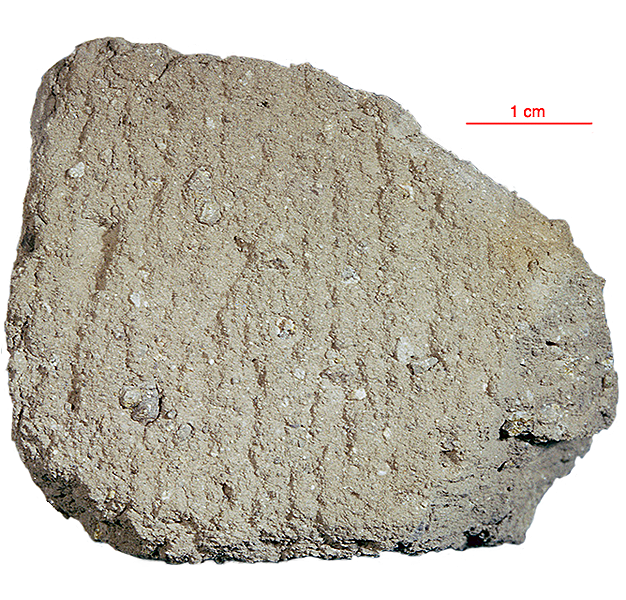
Fact sheet
15086 is a typical soil breccia - a fragmental-matrix breccia characterized by diverse population of mineral, glass and lithic clasts set is a matrix of light to dark brown glass fragments and comminuted mineral and lithic debris. The grain size distribution is seriate up to 3mm. Pore space is common and occurs as irregularly shaped vugs 0.4 to 2.5mm across. There is an abundance of green glass spheres, typical of the regolith in the region. Other glass is also common. Lithic clasts are mostly basaltic rocks with a variety of textures. Feldspathic basalts with KREEP composition are common.
The sample weighed 216.5 grams before analysis. The green glass has been dated at 3.29 billion years (Ar/Ar).
Further details of this and other Apollo samples are here: http://curator.jsc.nasa.gov/lunar/
The Apollo 15 landing site was in the Apennine Highlands, and close to Hadley Rille — a long, narrow winding valley. Approximately 76 kg of lunar material, including soil, rock, core-tube and deep-core samples, were returned to Earth.
This mission was the first flight of the Lunar Roving Vehicle which allowed the astronauts to venture further from the Lunar Module than in previous missions. During three periods of extravehicular activity, or EVA, on July 31st, and August 1st and 2nd, Scott and Irwin completed a record 18 hours, 37 minutes of exploration, travelling 17.5 miles, in the first car that humans had ever driven on the Moon.
Apollo 15 was launched on 26 July 1971.






